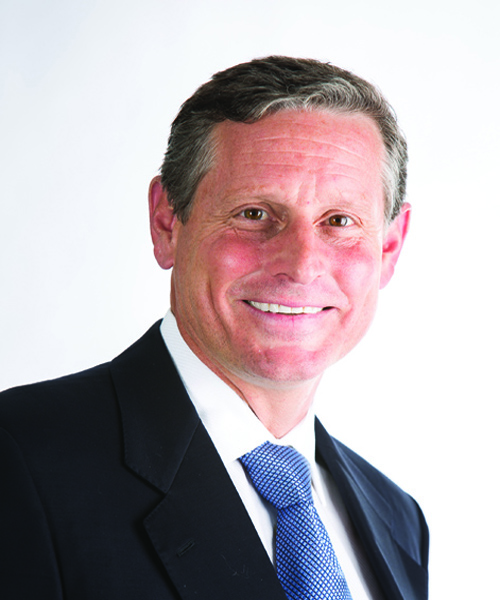
GC: Schneider has been acquisitive over the last few years. In terms of the core legal team, what challenges does that represent?
Peter Wexler (PW): There are a couple of things you need to look at when you’re doing an acquisition of a company. Does it have a legal team? Some of the acquisitions we did came with small teams, some with none, and some with large legal teams.
Obviously there are more challenges when it comes with a legal team, especially one of any size. Most recently, the larger acquisitions all came with fairly decent-sized legal teams – Invensys came with roughly 50 people.
I think primarily the challenge when you acquire a company with a sizeable legal department is that they have policies and procedures and a way of doing things that probably isn’t the same way that you do. But you need to ensure you get the value of the company you’re buying, which includes the people. You have to get them invested in what you’re doing and how you’re bringing them in. It’s a complicated, time-consuming task, but one that I think we do relatively well.
GC: Has the fact that Schneider has acquired a lot of companies changed the profile of the core legal team and the skillsets you need?
PW: One of the things we’ve tried to instil within the team is that one size doesn’t fit all. Secondly, and more importantly, it’s a meritocracy. A new hire is not necessarily going to be below someone who’s been here for 20 years. That’s a hard concept for a lot of people to grasp. I really do apply it on that basis. The best will succeed, and will be put in positions where they are given opportunities to do broader things.
As we’ve diversified the company through acquisition – because you don’t just buy the same kind of thing over and over again – we’ve realised that we needed different skillsets. You hire differently. I’ve got to the point of hiring people from different industries now, if we’re hiring from the outside. But first, we look internally.
The people you get from acquisitions are a great source of different thinking, they’re a great source of talent. Something I’ve always tried to do is put a member of the acquired company on my senior team. It shows you can be successful, even if you’ve been acquired. I was acquired! So I understand the need to feel like you’re part of the group. People think they lose because they were acquired, but you were acquired because you were wanted.
You have to be very honest about it to yourself. I think one of the things about being a GC is that you really have to do an assessment very early in this process and stick by it. You want to have a good idea of where people are going to fit into what you are going to do. The worst thing you can do is have people sitting around in fear as to what their careers are going to be. You really want to make an effort so that they understand where you’re going.
GC: Are there particular metrics that you use to assess people who are coming into the team, or is it more that just you get a sense of people’s potential?
PW: I try and interview every new hire that comes into my department, including people who were acquired. I came to London for the Invensys one and I brought my team in to meet with them. That said, I make that judgement. I don’t know of any metrics that can determine whether somebody’s going to be a good team player or not. It’s an art, not a science. You do it every day – is that someone I want to chat to? Is that someone I want to be around? We make that assessment very early.
For example, at a dinner following an acquisition I met someone on the acquired team who kept telling me everything that was wrong with his team – and I realised right then, that person’s not going to be a healthy team player. A meritocracy isn’t just about being smarter – it’s about how well you work with your colleagues, how well you work with the business. People don’t need to know you’re the smartest lawyer on the planet: what I want them to do is work as a team to make the team better. Putting down your colleagues is a sure way to not have a long career with Schneider! There’s a healthy respect we all have for everybody and I think that shows in the work. We want people who have a good attitude and can work as a team.
GC: When you’re doing an acquisition where there is a legal team in place, do you go in with a blueprint of what you need?
PW: We go in with a blueprint from day one. We’re going to refine that blueprint, but there’s a blueprint for every acquisition and it always involves full integration of the legal team into the global legal team. Who we leave where, how we do transitions, that’s a matter of nuance and of feeling your way as you understand how they deliver their service to the business.
The first rule is to be just like a doctor – do no harm. The business has to operate, full stop. You’re buying a going business, you want it to run. Behind the scenes you have a plan, and that plan may be implemented over a year, but you have the plan and then you tweak it as you go along to make sure the business doesn’t feel that interruption.
GC: Do you have any particular tactics for integrating new teams into the wider Schneider team?
PW: Everybody’s different – there are regional differences, there are cultural differences, there are business culture differences, and so there is no ‘one size fits all’. I think the key is communication and transparency. You tell them what your plan is up front and you get them to understand where you are going. Then they can put their best foot forward to try and fit within that plan.
Also, there has to be a healthy recognition that no team is perfect. Certainly not the teams I oversee – we get better every day, and adding people makes us better. So we have to have a healthy recognition that not everything we do is right; we have to be open to learn from who we acquire. When I got acquired, I was told I’d have to change the way I did things, because ‘that’s how we’ve always done things here’. That’s not the philosophy we kept. It’s the wrong philosophy. Schneider is always changing, and that was a very parochial attitude that I didn’t think was very helpful.
GC: What are the challenges of working for a company that spans so many geographies and is so diverse?
PW: I’m very fortunate because I actually like that aspect of it. I lived in Tokyo, I lived in London, I’ve travelled the world, and have dealt with and negotiated issues in every corner of the planet. I think it’s just spending the time. There are differences. A team in Russia is not the same as a team in South America or China or London. It’s something you have to work at very hard and understand that not everyone shares your cultural ways. You have to be sensitive – to a point. You have to recognise that different regions operate differently, but within that you can move forward.
I think the methodology the Americans have is very straightforward and very blunt – ‘this is the answer and this is how we get there’. The methodology of many Europeans is more collaborative, more consensus driven. You have to recognise that some cultures want to debate an issue; even if you think that some of the things they are debating are irrelevant, they have to go through that process to get to the right answer. Also, some countries operate with a lot more bureaucracy; that’s just the nature of the way their regime operates. There’s a process behind certain things – you may not agree with it or like it, but you have to go with the process!
GC: Does diversifying the business into other areas produce additional challenges when it comes to integration?
PW: There are differences in different types of business models and legal has to learn those business models. Sometimes the differences are not as dramatic as the business wants you to believe – they’re saying ‘my system is unique, please don’t mess with what you just bought!’ In some cases they have a point, in some cases they don’t. At the end of the day, for instance, project contracting is a subset of regular contracting. It’s a speciality, but you can learn it. One of the things we like to do when we acquire a business is have the people educate us; likewise, it’s our job to educate those who come in as to how we do things. That cross-pollination is very important. It means people can get better and they can do more. You have to adapt, but I don’t think it’s that hard – I’ve never seen a situation where we just couldn’t do it.
GC: When you became GC, did you centralise everything?
PW: Yes. I was the first of the global functions. There was previously no centralisation – insurance wasn’t under one umbrella either, nor was compliance. I flew around the world at the request of the CEO and the CFO and figured out what we had and what we spent globally. That was an interesting exercise because it enabled us to cut our costs dramatically, get better talent, recruit people to the company and get rid of the people who weren’t working out. It was a great learning experience for me and it was great for the company – they subsequently did it with five or six other functions and it’s worked out pretty well.
Top tips
We asked Wexler for practical tips for other GCs involved in merging two legal departments:
- Acquisitions are tough. Most don’t go smoothly and many are not successful – understand that at the beginning.
- Try and minimise the distractions to the acquiring company.
- Have a plan going in.
- Put good people in charge, give them a guideline and let them execute it and come to you with any problems.
- Make decisions quickly – the worst thing you can do is let things sit and fester.
GC: Are there particular qualities needed to be a GC of a company with such a proactive M&A strategy?
PW: With regards to M&A, I’d say the ability to delegate. When you have so many deals going on, it’s impossible to be a micromanager. You have to hire good people and trust that they’ll do their jobs right and come to you with what they need to. You also have to leave your ego aside and allow your people to shine. You become more effective when you empower your people to look like rock stars. In return, they’re going to appreciate working there and will work harder. You’ll be rewarded with a loyal and good team.
GC: And with regard to being GC of such a diverse company?
PW: Be results orientated but understanding; trust that if you’ve hired good people they’ll get it done. It might not be done your way, but it’ll work out. Let them build their own relationships in the organisation outside of you. It makes them effective and it builds the general counsel’s brand: ‘The general counsel hired those people? Those people are great!’ If you want to build long-term success, you can’t be the face of everything.

